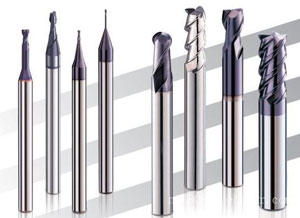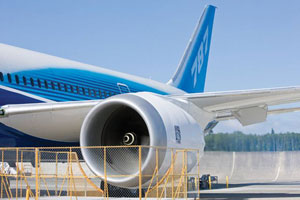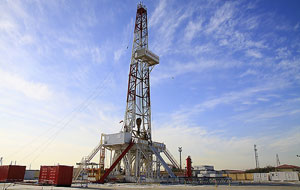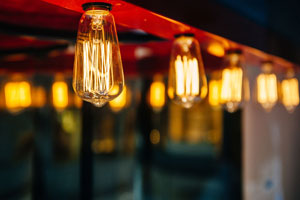How Tungsten Is Used
Tungsten Applications
Tungsten has the highest melting point among all metallic elements. Its density is high and is comparable to that of gold. Tungsten is very hard. Tungsten carbide’s hardness is nearly equal to that of diamond. Furthermore, tungsten provides good electrical and thermal conductivity and exhibits a low coefficient of thermal expansion. It is widely used in alloy production, electronics and the chemical industry.
Alloy Field
Tungsten’s high hardness improves the strength, hardness and wear resistance of steel. It plays an important role as an alloying element and is widely employed in various steel productions. Common tungsten steels include high‑speed steel, tungsten steel and tungsten‑cobalt magnetic steel. These steels are used mainly in the manufacture of tools such as drills, milling cutters, drawing dies and forming dies.

Tungsten Carbide-based Hard Alloy
Tungsten carbide shows high wear resistance and heat resistance. Its hardness is nearly equal to that of diamond. It is frequently employed in the manufacture of hard alloys. Currently, tungsten carbide-based hard alloys represent the largest consumption sector for tungsten. The carbide is manufactured by powder metallurgy. It is produced by sintering tungsten carbide powder with a metallic binder (e.g. cobalt, nickel, molybdenum) in either a vacuum furnace or a hydrogen reduction sintering furnace. These hard alloys are typically divided into four types: tungsten carbide with cobalt, titanium carbide with cobalt and tungsten carbide, titanium carbide, tantalum carbide with cobalt, and steel-bonded hard alloys. They are mainly used in the production of cutting tools, mining tools and drawing dies.
Heat and Wear Resistant Alloys
Tungsten has the highest melting point among all metals and very high hardness. Consequently, it is used to produce alloys that resist high heat and wear. For example, alloys containing tungsten, cobalt, chromium and carbon are used to manufacture parts requiring high strength and wear resistance. These parts are used in aerospace engine valves and turbine impellers. Tungsten combined with other high‑melting-point metals is also employed to produce high‑strength components for rocket engine nozzles.

High-Density Alloy
Owing to its high density and hardness, tungsten is suitable for manufacturing high‑density alloys. Based on composition, properties and applications, these alloys are divided into series such as W‑Ni‑Fe, W‑Ni‑Cu, W‑Co, W‑WC‑Cu, W‑Ag and others. They exhibit high weight, high strength, radiation absorption capability, thermal conductivity and a low coefficient of thermal expansion. They also possess good electrical conductivity, weldability and ease of processing. They are widely used in aerospace, military, oil drilling, electrical instrumentation, medical and other industries. These alloys are applied in the manufacture of contact materials, balance hammers, armoured parts, fins, rudders and control components such as switches, power switches and spot welding electrodes.

Electronics Sector
Tungsten is widely used in the electronics and energy industries because of its high plasticity, low evaporation rate, high melting point and high electron emission capability. For example, tungsten is used in the manufacture of incandescent filaments for incandescent and halogen lamps owing to its high luminous efficacy and long operational life. Tungsten wire is used to produce hot cathodes, grids and various electronic instruments. Its properties also allow its use in gas tungsten arc welding.

Chemical Sector
Tungsten compounds are used as catalysts and in the production of inorganic pigments. For example, tungsten disulphide is employed as a lubricant and catalyst in the synthesis of petrol, tungsten oxide is used in paints, and calcium or magnesium tungstate is utilised in fluorescent powders.
Other Sectors
Tungsten’s thermal expansion closely matches that of borosilicate glass. Consequently, it is used in the manufacture of glass-to-metal seals. Its low sensitivity permits the production of high‑purity tungsten jewellery. Additionally, tungsten is used in nuclear medicine and in certain instruments that utilise tungsten wire.

 Bars
Bars
 Beads & Spheres
Beads & Spheres
 Bolts & Nuts
Bolts & Nuts
 Crucibles
Crucibles
 Discs
Discs
 Fibers & Fabrics
Fibers & Fabrics
 Films
Films
 Flake
Flake
 Foams
Foams
 Foil
Foil
 Granules
Granules
 Honeycombs
Honeycombs
 Ink
Ink
 Laminate
Laminate
 Lumps
Lumps
 Meshes
Meshes
 Metallised Film
Metallised Film
 Plate
Plate
 Powders
Powders
 Rod
Rod
 Sheets
Sheets
 Single Crystals
Single Crystals
 Sputtering Target
Sputtering Target
 Tubes
Tubes
 Washer
Washer
 Wires
Wires
 Converters & Calculators
Converters & Calculators
 Write for Us
Write for Us
 Chin Trento
Chin Trento



